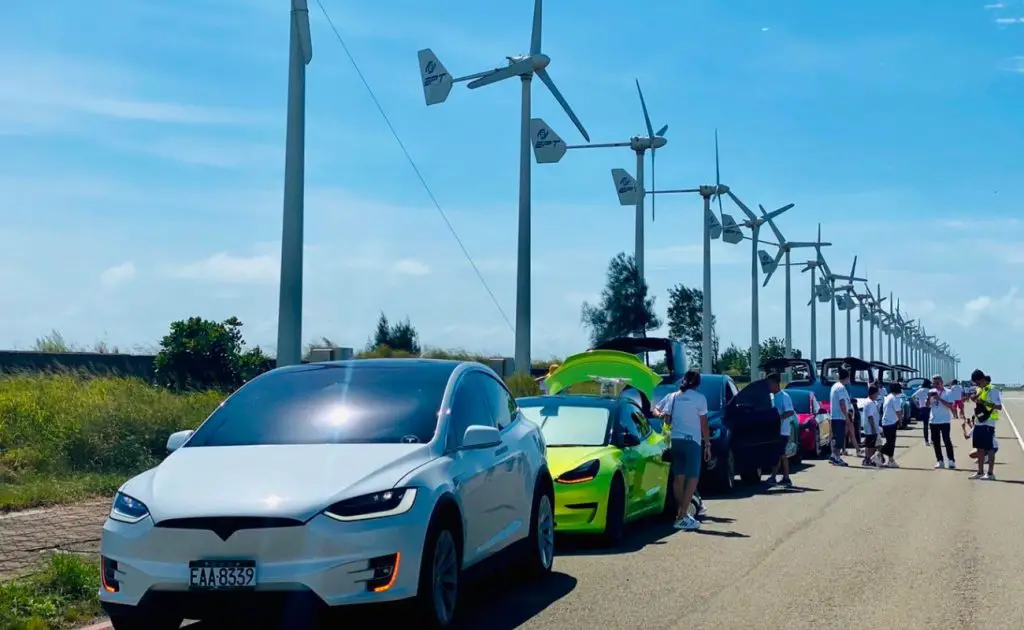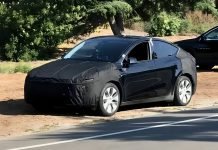Imagine being able to keep your house and car running on limitless energy with the use of solar and wind energy storage.
No dependence on gas or a grid alone to get every gadget or appliance smoothly running.
Won’t that be a great addition to our lives to be able to keep our carbon footprint to a minimum and sustain our energy uses?
Electric vehicles and renewable energy sources are two of the most important technologies for creating a sustainable, clean future.
By pairing them together, we can create a powerful synergy to better manage our transportation needs and reduce the environmental impact of traditional gas-powered cars. EVs offer superior energy efficiency, while renewable energies such as solar and wind can provide reliable power for every energy demand.
Combining these two technologies can help us to move away from relying on fossil fuels in a big way. With these advantages in mind, it’s time to take full advantage of the potential benefits of EVs and renewable energy sources to create a more sustainable tomorrow. But how far away we are from this dream?
Let’s find out!

Table of Contents
Renewable Energy & EVs
According to the latest report the United States set a record when zero-carbon sources provided 41% of the electricity mix. This is a significant increase from 1990 and it was largely driven by the dramatic reduction in costs for solar and wind power over the last two decades. Nuclear and hydroelectric energy has remained steady at around 19% and 10% respectively since then. The news comes from the Sustainable Energy in America 2023 Factbook, released on Wednesday.
2022 is the year that was noted as remarkable for EV purchases and new EV launches making up for as much as 7.1% share in new vehicle sales. The astonishing growth marks for another victory of touching one million EVs in the United States.
Solar Energy
Solar energy is a clean, renewable source of energy that can be used to power homes, businesses, and electric vehicles (EVs). It produces no pollution, requires little maintenance, and is becoming increasingly accessible as solar panel technology continues to improve.
For EV owners, going solar can reduce their fuel costs and provide dependable power regardless of the time of day or weather conditions. Moreover, solar-powered EVs will impact the environment far less than gas-powered cars, making them an attractive option for those who are looking to reduce their carbon footprints.
Benefits Of Using Solar Energy To Power EVs
Solar energy provides numerous benefits when used to power EVs. The following factors make solar energy an attractive option to switch to electric vehicles:
- Solar-powered EVs are cheaper to run as they require significantly less fuel than gas-powered cars and can reduce total fuel costs over the lifetime of the vehicle.
- Solar panels can provide a dependable source of power regardless of the time of day or grid conditions, meaning that EV owners no longer have to worry about running out of charge during their daily travels.
- Using solar energy to power EVs reduces environmental impact as it produces no pollution.
The Cost Savings From Using Solar-Powered EVs
Solar-powered EVs require significantly less fuel than gas-powered cars, resulting in substantial cost savings over the lifetime of the vehicle. The efficiency of solar panels has improved significantly over time, meaning that solar energy can now be harvested at a much lower cost than traditional energy sources.
When compared with traditional fuel sources, solar energy offers a number of benefits for EV owners. This makes it an attractive option for EV owners, as they no longer have to pay excessively high fuel costs or worry about running out of charge for their daily travels.
Wind Energy
Wind energy is also an increasingly attractive option for powering EVs due to its low cost and environmental friendliness. Wind turbines can generate renewable electricity at a much lower cost than traditional sources, meaning that EV owners can save significantly on their fuel bills.
The use of wind energy reduces emissions of pollutants and carbon dioxide, making it an ideal choice for those looking to reduce their footprint on the environment. Wind-power-based energy for EVs provides a highly efficient alternative and helps make the switch to electric vehicles even more affordable.
The Overall Environmental Impact Of Using Wind Energy For EVs
The overall environmental impact of using wind energy to power EVs is highly positive. Wind energy creates no pollution and produces no emissions, meaning that it can be used to drastically reduce the carbon footprint of vehicles.
Wind turbines require minimal maintenance and have a long lifespan, making them a reliable and sustainable option for long-term use.
The primary challenge of using wind energy to power EVs is its intermittent nature. Since the amount of generated electricity depends on the availability and strength of the wind. Also, there is potential noise pollution from large turbines that may put off some people living in close proximity to them.
Logically saying, it can be difficult for EV owners to rely solely on this source as a consistent form of power. Moreover, the installation and maintenance costs associated with wind turbines can be high, depending on their size and complexity.
Currently, there is a scarce infrastructure to support wind power conversion and storage for EV charging, but it is bound to grow.
Because wind energy is renewable, it does not contribute to climate change or other environmental concerns associated with traditional fuel sources. This makes it an ideal choice for us to make the switch to electric vehicles while preserving our responsibility towards the environment.
Why Invest In Renewable Energy?
Investing in renewable energy sources to charge EVs can provide long-term economic benefits, such as:
Increased job creation due to the rapidly growing renewable energy sector.
Stable energy costs over time due to the predictability of energy from renewable sources, often at lower prices than traditional fossil fuels.
Economic savings from reduced air and water pollution associated with burning fossil fuels, making communities safer and healthier for residents. Positive environmental impacts by reducing carbon emissions and contributing to a reduction in global warming. Norway is able to produce 99% energy needs using renewable energy, it’s just a matter of time and infrastructure investment before we will see a stern rise toward a greener tomorrow.
Here is a list of EV manufacturers currently using renewable energy sources at least in some way to go greener:
- Tesla
- Volkswagen
- Nissan
- Hyundai Motor Group
- BMW
- Ford Motor Company
Tesla’s Gigafactory in Nevada is powered by a combination of solar, wind, and geothermal energy sources. The plant is equipped with 7,000 solar panels, as well as onsite wind turbines. Geothermal energy is also used to help cool the facility, as well as its batteries while they are charging.
The Gigafactory has an onsite substation and a tie-line connecting it directly to NV Energy’s renewable energy grid. As of 2019, the plant was already storing over 129 megawatts of power from clean sources.
Tesla is a leader in the use of solar energy to power their EVs. Through their Solar Roof and Powerwall programs, Tesla combines solar with battery storage so that homeowners can store and use renewable energy for their vehicles.
Also, Tesla’s Gigafactory in Nevada is designed to be 100% renewable, and the company has committed to using only renewable energy to power all of its facilities worldwide as they expand.
The climate benefit of EVs, therefore, doesn’t just depend on how green the electricity used to charge their battery is, but also on the carbon intensity of the electricity used for manufacturing the batteries.
Is Renewable Energy and Electric Vehicles Really Sustainable?
The debate on renewable energy and electric vehicles has been raging for the past few years. With technological advances, supporters of renewable energy are optimistic about its potential to reduce our reliability on fossil fuels and reduce carbon emissions.
But is this really the case?
The answer to the question depends on several factors. Firstly, let’s investigate the sustainability of electric vehicles. EVs are powered by electricity from the grid, so their sustainability relies heavily on the source of that electricity.
If it comes from a predominantly renewable source, such as solar or wind power, then EVs can be considered sustainable in terms of their carbon emissions. However, if the electricity comes from coal or nuclear-generated sources, then there may not be much environmental benefit in switching to EVs over gasoline-powered cars.
When it comes to renewable energy sources such as solar and wind power, can have a positive environmental impact when compared with conventional energy sources like coal or gas. However, the newer energy means also come with their own problems.
For instance, solar panels require large tracts of land to be used for installation purposes; this may result in land degradation or the destruction of natural habitats. Similarly, wind turbines generate noise pollution and make it difficult for wildlife to thrive in those areas. Therefore, while renewable energy has great potential for reducing carbon emissions, it does not always come without a cost.
Electric vehicles (EVs) are becoming an increasingly popular form of transportation, and require anywhere between 24 to 50kWh of electricity for every 100 miles travelled. With the US Department of Energy predicting a 38% increase in national electricity consumption by 2050 due to increased electrification, including EV use, it’s important to consider where this electricity will come from.
The use of fossil fuels for EV charging can have significant environmental impacts, ranging from the release of greenhouse gases and other pollutants that contribute to global warming, to water and land contamination.
If charged by grid electricity produced largely by fossil fuels, EVs could inadvertently result in substantial greenhouse gas emissions or help extend the life of those fuel sources. Using renewable energy sources like the wind is a great way to ensure that the electrical needs of EVs are met in a sustainable way.
What To Expect In The Future?
Solar energy is a clean, renewable energy source that has numerous advantages, but it does come with some challenges. Solar energy can be expensive to install and maintain, and even then, the amount of energy produced is dependent on the weather – cloudy days mean less energy.
Solar panels are a great choice for those looking to reduce their energy costs and lower their carbon footprint. During hours of low demand, they can generate more energy than is needed and store it, ready to be used at peak times. With this efficient storage of renewable energy, homeowners and businesses alike have the potential to benefit from a reliable source of clean power.
The photovoltaics used in solar panels take up large amounts of land space and have a negative impact on local biodiversity. Despite these challenges, with the right investments, solar energy is becoming an increasingly viable option for many homes and businesses.
The adoption of electric vehicles (EVs) promises to bring about a cleaner, more efficient future for transportation. However, EV technology is only part of the equation; in order for it to truly revolutionize the way we get around, it must be paired with renewable energy sources such as solar and wind power.
Together, these two technologies can form a powerful synergy that will create a sustainable, reliable energy supply for powering our vehicles. By leveraging the advantages of both EVs and renewable energy sources, communities can reduce their reliance on fossil fuels and help pave the way toward a cleaner environment.
Bottomline
Electric vehicles (EVs) are quickly becoming one of the most popular solutions to the global emissions problem. Not only are they more efficient than traditional internal combustion engines, but they can also reduce the need for travel-related emissions when powered by renewable energy sources.
If an EV is powered by electricity generated from a coal-fired power plant, it may produce fewer emissions overall compared to a gasoline-powered vehicle, but still, contribute to local air pollution. Therefore, it is essential that we invest in renewable sources of energy like solar and wind, as part of our efforts toward a more sustainable future.
The bottom line is that both EVs and renewable energy sources have pros and cons associated with them. We as future EV buyers need to weigh up all options before deciding whether renewable energy for EVs is a truly sustainable option for our planet. But, they still are far better than the traditional means of energy we are currently using.
Currently, there is no clear-cut answer as different scenarios need different solutions depending on individual variables such as local geography and availability of resources like wind or land.
Ultimately though, unless we take concerted action to reduce our consumption levels and move towards more sustainable forms of energy production, then it is hard to provide any meaningful answer regarding the long-term sustainability of either EVs or renewable energy sources.
Tesla has become a leader in the renewable energy industry with its electric vehicles and solar energy solutions. By making these products available to the public, Tesla is helping to reduce global dependency on fossil fuels while also providing an environmentally-friendly alternative.



















Solar can’t be used all the time, doesn’t work when it’s cloudy, or severe overcast or during heavy winter storms and doesn’t work at night.
Wind is also useless when there is no wind. And the annual maintenance cost is more than the cost of a replacement wind turbine.
The above two power sources are not continuous power generation but are passive.
Now a topic on fossil fuels, oil and natural gas is not a fossil fuel but are complex hydrocarbons.
The only fossil fuel we use is coal.
If you don’t like co2 then plant trees.
Climate change is not caused by humans but each change in earth’s tilt has a dramatic on earth’s climate. It doesn’t help that the moon is moving away from earth a mm/year that also disrupts the earth’s rotation and tilt.
I had to cut a lot of trees down to allow enough sunlight to reach my roof mounted solar panels and for doing all of this I don’t think the panels will routinely generate enough excess electricity to run my electric car, and certainly not with any predictability in New Hampshire. Solar panels will last 20 years and then all the mining that it took to create them will be for not and they’ll end up in a landfill here or somewhere else. Recycling seems like it won’t make any economic sense so therefore it won’t happen. My power company will still need to operate a fossil fuel plant to back up my iffy solar panels all the while.
The author’s claim about solar panels: “they can generate more energy than is needed and store it, ready to be used at peak times” is fallacious. Solar panels can’t store any electricity without batteries full of rare earth minerals from CO2 intensive and environmentally damaging mining but excess electricity can be sold back to the utility company running its fossil fuel burning plant.
As usual, we’re pursuing some consequence free perfect solution to this and there isn’t one-we’ll be killing the environment (maybe not right in our backyard but somewhere else where someone is raping the earth for battery minerals or having birds shredded in wind turbines or scraping habitats to site solar panels) in the name of saving the climate. And there’s little chance that a bunch of shortsighted politicians and the promises they make for future politicians to maybe honor (they’ll never be in office long enough to have to cash the checks they write to get elected) will make a real difference.
It would be cheaper to deal with the effects, if there any many for most of us, than it would be to fumble toward all these silly “solutions”. And if nuclear isn’t on the table, then you’re not really serious about a scaled, reliable non CO2 solution.